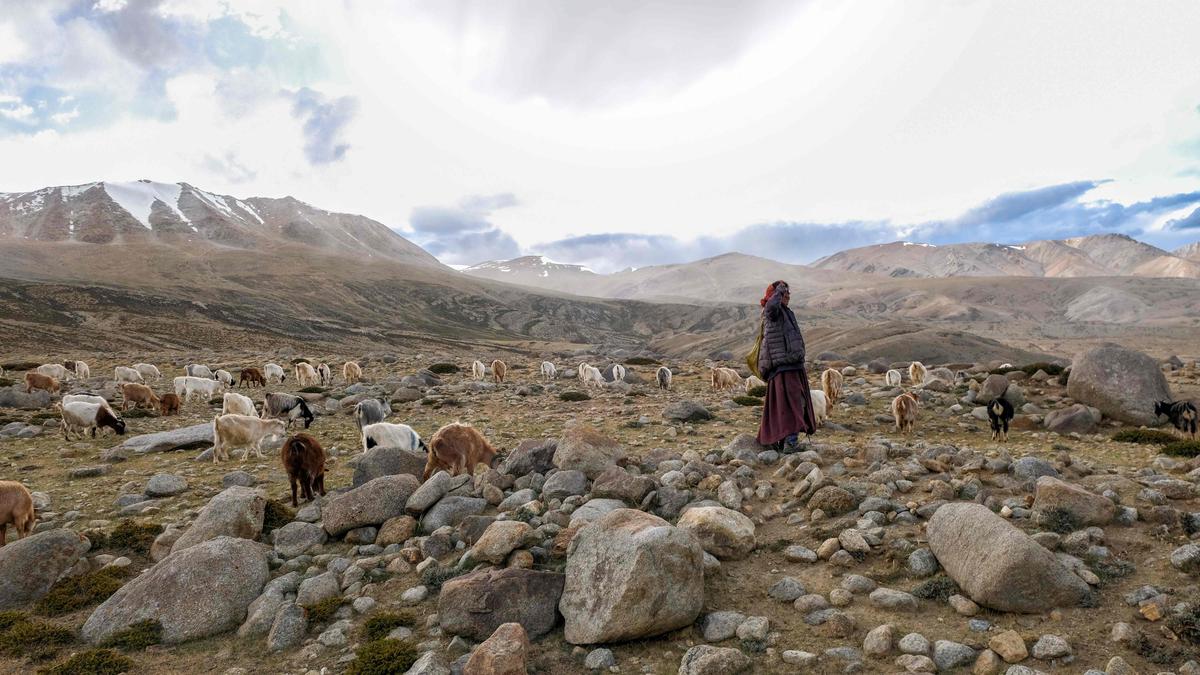
A battle to save Ladakh, and all of humanity Premium
The Hindu
In the name of development, we cannot afford to upset the fragile balance in the Himalayan ecosystem and its biodiversity
When Ramon Magsaysay award winner (2018) and climate activist Sonam Wangchuk addressed a 30,000-strong crowd at Leh, Ladakh on March 6, 2024 to announce his 21-day climate fast, he was not just speaking to the people of Ladakh but also making an appeal to the world.
Tucked away between India’s neighbours, Pakistan and China, at a height of 11,500 feet, Ladakh comprises 97% indigenous tribes, many of whom lead simple pastoral lives and depend on farming and animal rearing for a livelihood. Apart from border disputes, the Himalayan region also faces the damaging effects of climate change through floods, drought, landslides, greenhouse gases, and other pollutants.
There are about 15,000 glaciers in the Himalayan region, often referred to as the Third Pole. In spring and summer, these glaciers form an important part of the hydrological process by releasing meltwater to the Indus, the Ganga, and the Brahmaputra. The Himalayan glaciers, like those in the rest of the world, are at risk of melting due to global warming and climate change. This will affect both residents of the mountain region and those living downstream.
In 2008, the Centre launched eight Missions under the National Action Plan on Climate Change (NAPCC). One of these was under the Ministry of Science and Technology, i.e., the National Mission for Sustaining the Himalayan Ecosystem (NMSHE). As the Department of Science and Technology (DST) website states, the “main objective of NMSHE is to develop a capacity to scientifically assess the vulnerability of the Himalayan region to climate change and continuously assess the health status of the Himalayan ecosystem”.
So, why has NMSHE forgotten its role of protecting the Himalayan region?
Almost as soon as Ladakh became a Union Territory, several mega infrastructure projects were launched at rapid pace. These included the construction of bridges, widening of roads, tunnels, railway lines, mega solar projects, a state-of-the-art airport terminal and wayside amenities to boost tourism. Among these were the 14.15 kilometre Zojila tunnel, the 230 km Kargil-Zanskar National Highway project, and a 10 gigawatt solar energy project covering 20,000 acres in the Changthang region. The Ladakh (UT) Industrial Land Allotment Policy of 2023 aims “to make UT Ladakh one of the preferred destinations for investment”.
The Border Roads Organisation (BRO) has been spearheading many of these projects along with the National Highways & Infrastructure Development Corporation Ltd. (NHIDCL). In its annual report of 2021-22, the NHIDCL states as its vision the following: “To fast-pace the construction of National Highways and other Infrastructure in the North Eastern Region, near border and strategic areas like Jammu and Kashmir, Ladakh and also in the state of Uttarakhand and UT of Andaman & Nicobar islands”. Incidentally, all these areas are vulnerable to climate change-related disasters.













